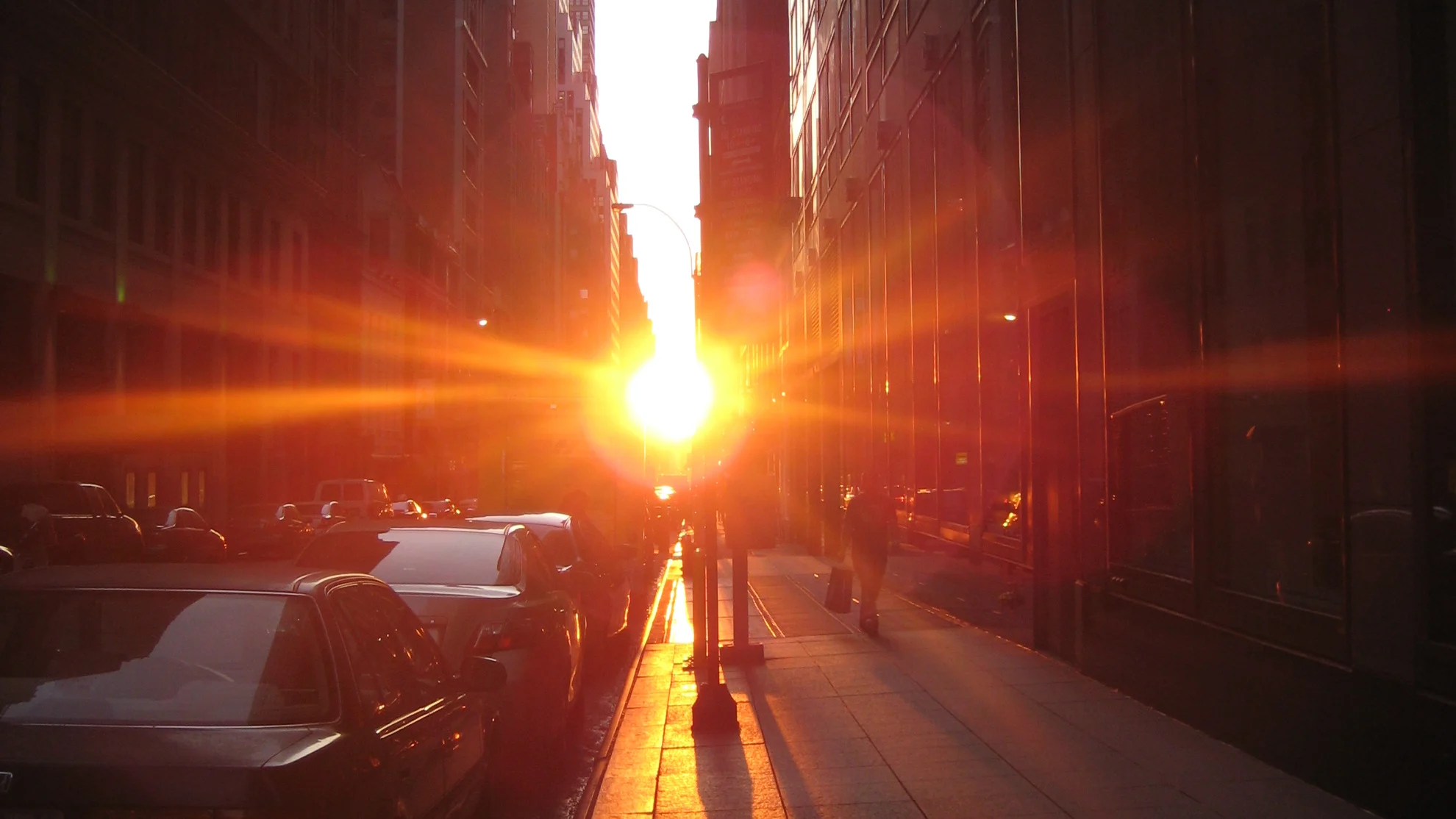
Cloudy skies obscuring Torontohenge? Here's when you can see it
Cameras at the ready for this spectacular solar alignment!
Look to the west along any of downtown Toronto's east-west aligned streets later this week to witness the phenomenon known as Torontohenge.
Torontohenge has become something of a cultural phenomenon. Once, this particular time of year was simply dreaded by commuters who would have to put up with the Sun shining directly in their eyes as they navigated downtown Toronto's urban canyons.
However, years ago, astrophysicist Neil deGrasse Tyson coined the term 'Manhattanhenge' to describe how the skyscrapers of New York City would perfectly frame the setting Sun on certain days of the year.
Although the effect is coincidental rather than deliberate, it is still very similar to what is seen during the summer and winter solstices at the ancient monument Stonehenge.

Manhattanhenge along 42nd St, June 3, 2008. Credit: Sevtibidou/Wikimedia Commons
Toronto also experiences these same kinds of solar alignments. Appropriately, the phenomenon has been named Torontohenge.
In 2024, look for the setting Sun to line up with Toronto's downtown east-west streets starting on February 14.
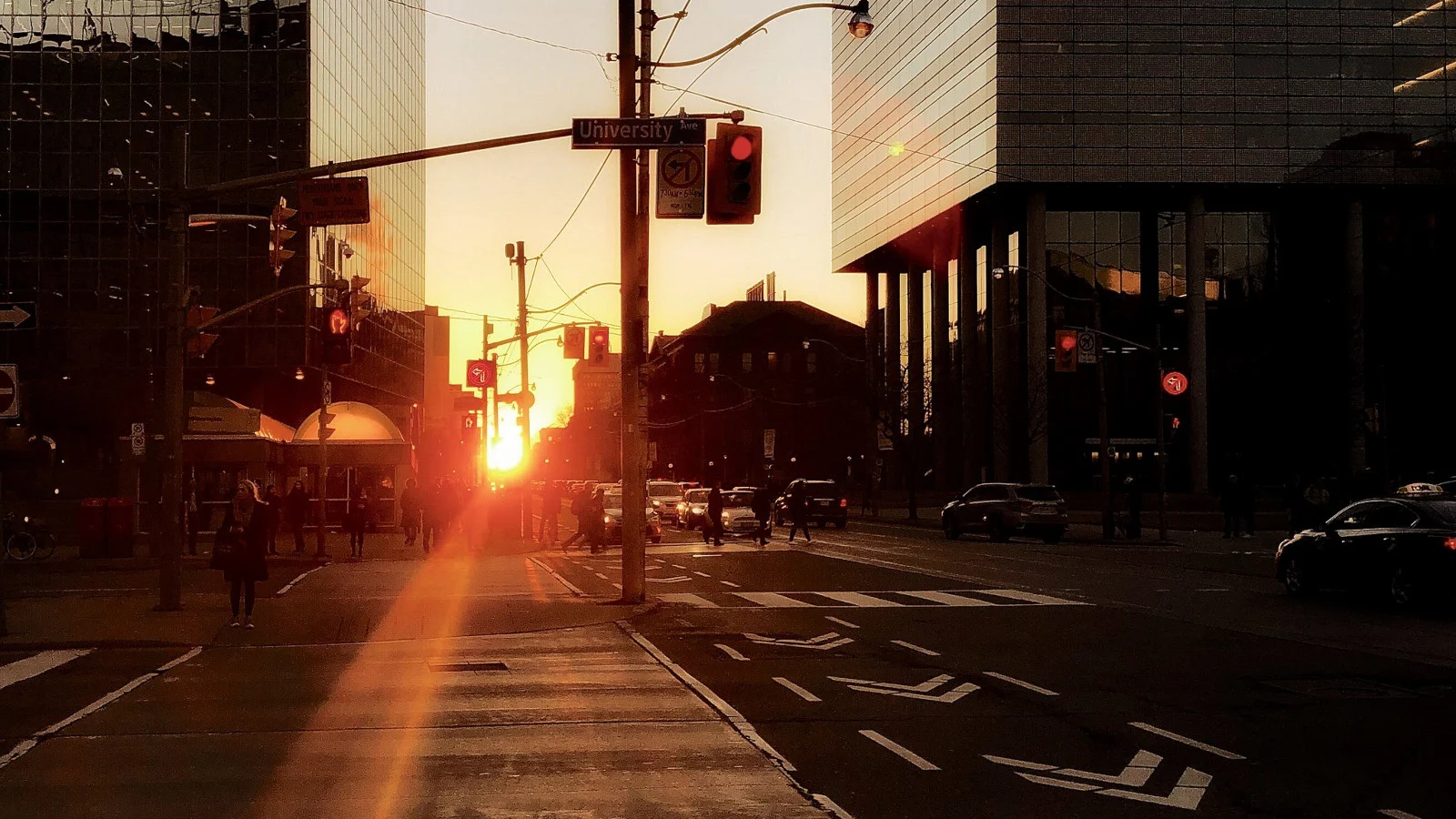
Torontohenge from College St in downtown Toronto, captured on February 22, 2018. Credit: NextThingIKnow/Wikimedia Commons (CC BY-SA 4.0)
According to Ralph Bouwmeester, a Sun/shadow modeller who runs the SunPosition blog, Torontohenge actually occurs four times during the year — at sunset around February 15 and October 25, and at sunrise around April 19 and August 23.
In addition to when the full disk of the Sun is visible on the horizon between the skyscrapers, Neil deGrasse Tyson's timing of Manhattanhenge also includes details about "Half Sun on the Grid," when the Sun is half below the horizon as it aligns with the streets.
Presuming the same for Torontohenge, the half-Sun should align with downtown Toronto's streets on Wednesday, February 14. The full-Sun alignment should then occur on Thursday. Plus, Bouwmeester says we will continue to see it for about a week after the date, with the Sun higher above the horizon each day.
Sunset occurs at:
5:45 p.m. on Wednesday, Feb 14
5:47 p.m. on Thursday, February 15,
5:48 p.m. on Friday, February 16,
5:49 p.m. on Saturday, February 17,
5:51 p.m. on Sunday, February 18,
and a minute or two later each day after.
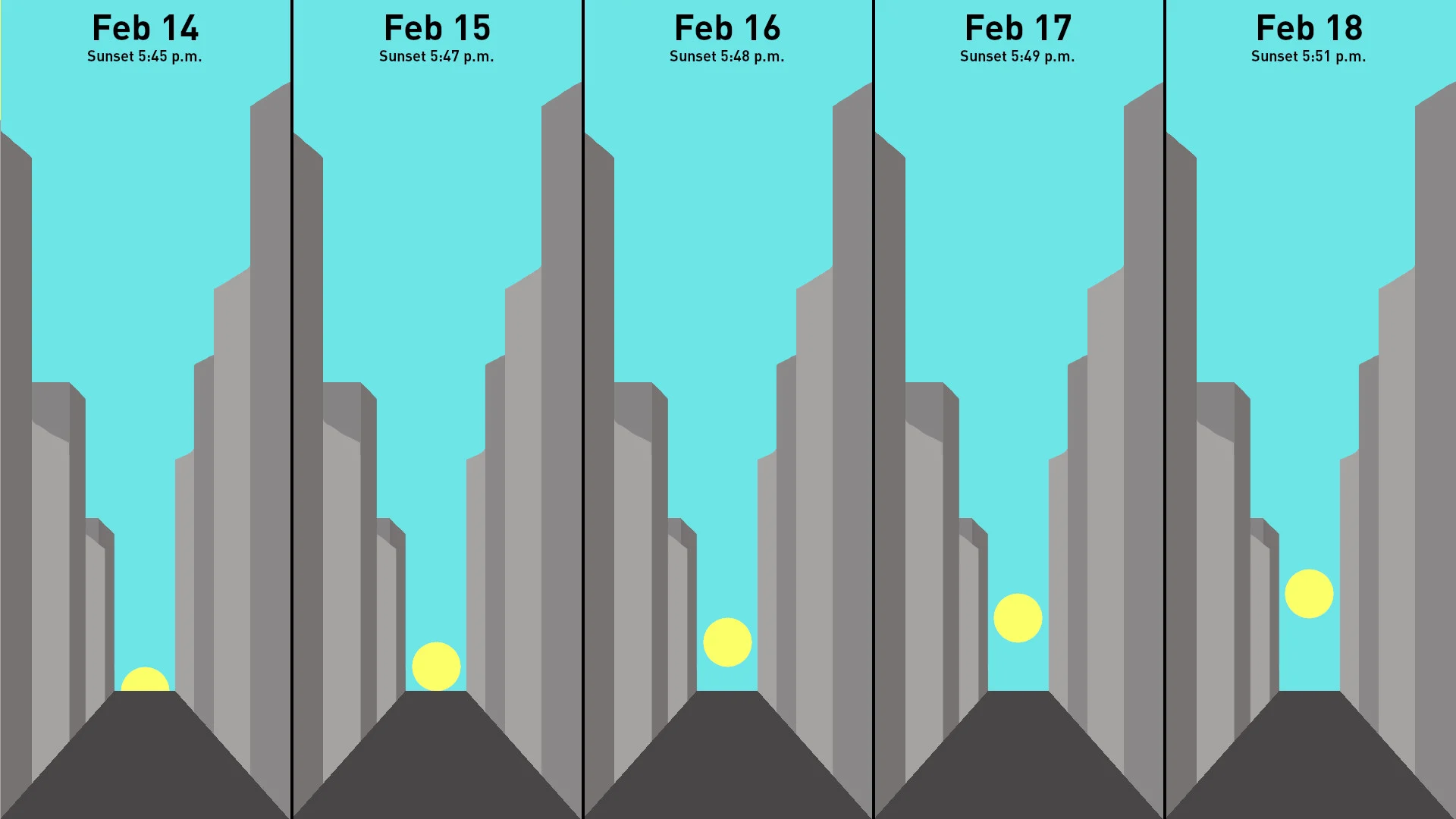
This diagram shows how the setting Sun is slightly higher in the western sky as it aligns with the city grid each day. Sunset times are specifically for 2024. Credit: Scott Sutherland
To get the whole experience, plan to set up at your desired viewing spot at least half an hour before sunset. That way, you can watch as the Sun slowly comes into alignment between the buildings.
DON'T MISS: Are you ready for the April 8th Total Solar Eclipse? Here's how to prepare
Clear or cloudy skies?
Based on the weather forecast, conditions should be excellent for Wednesday's 'half-Sun' alignment and the week after the 15th looks reasonably clear. However, Thursday's weather does not appear to be cooperating.
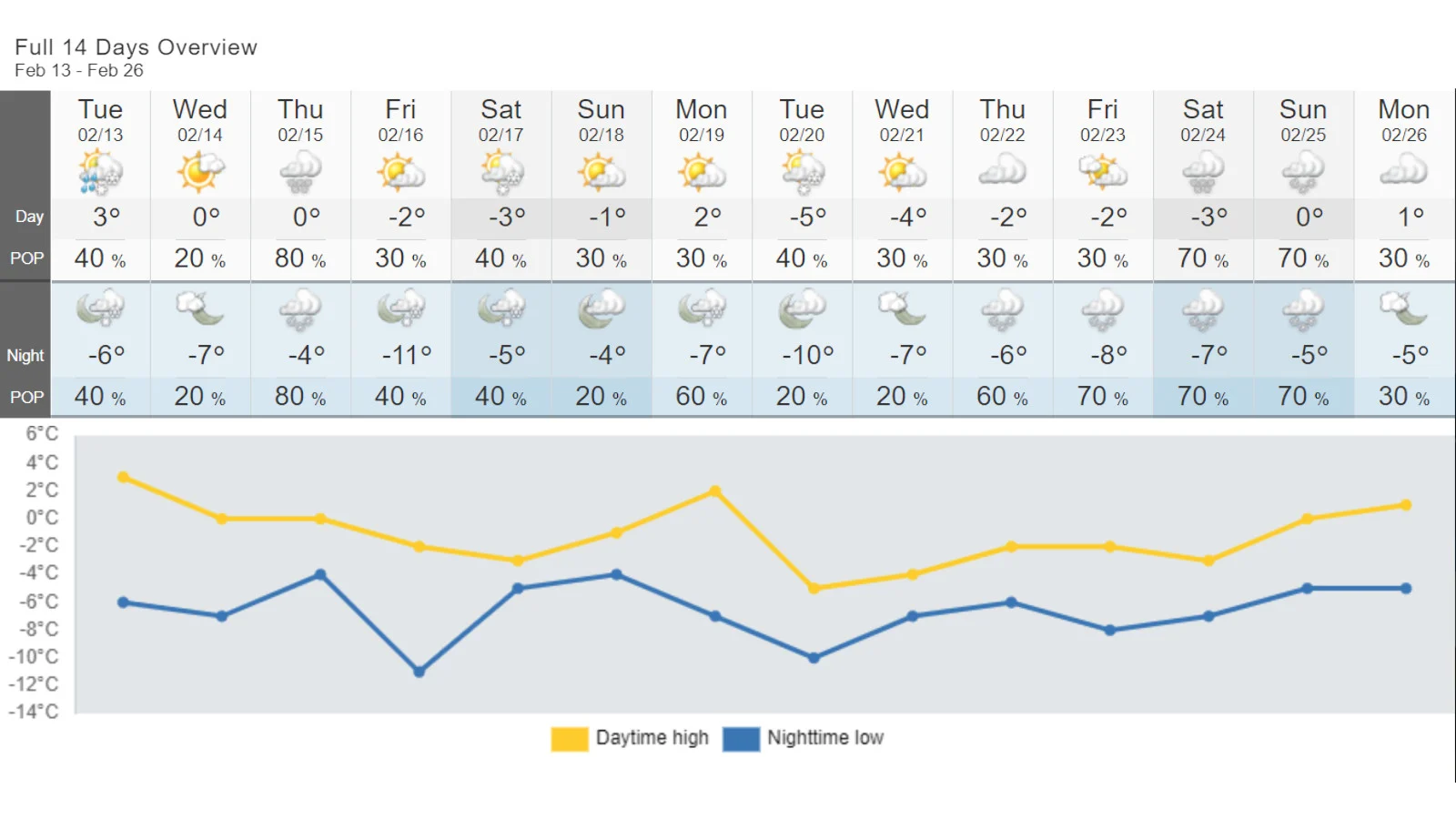
"Thursday will be mostly cloudy and windy with wet snow developing during the afternoon and ending during the evening," says Weather Network Senior Meteorologist Doug Gillham. "5 to 10cm of snow are likely for most of the region, but lower totals are expected across the Niagara region and near Lake Ontario."
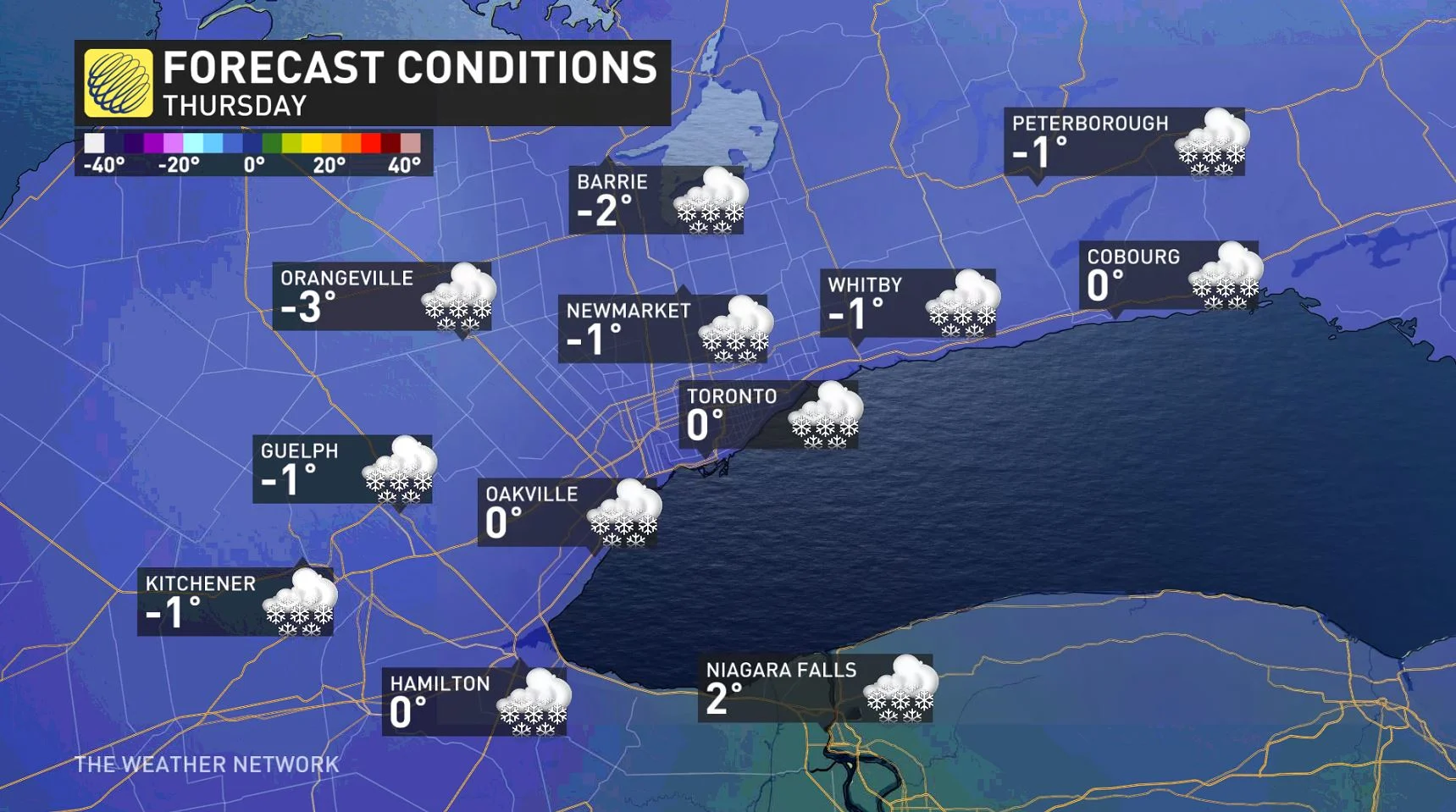
Check for updates to the forecast as the week progresses.
Where to see it_
The best downtown locations to view Torontohenge are along Wellington Street W, King Street W, Adelaide Street W, and Richmond Street W. On King Street W, outside of Roy Thomson Hall, is especially good. Farther north, Bloor Street W, near the intersection with Yonge Street, is also a great spot.
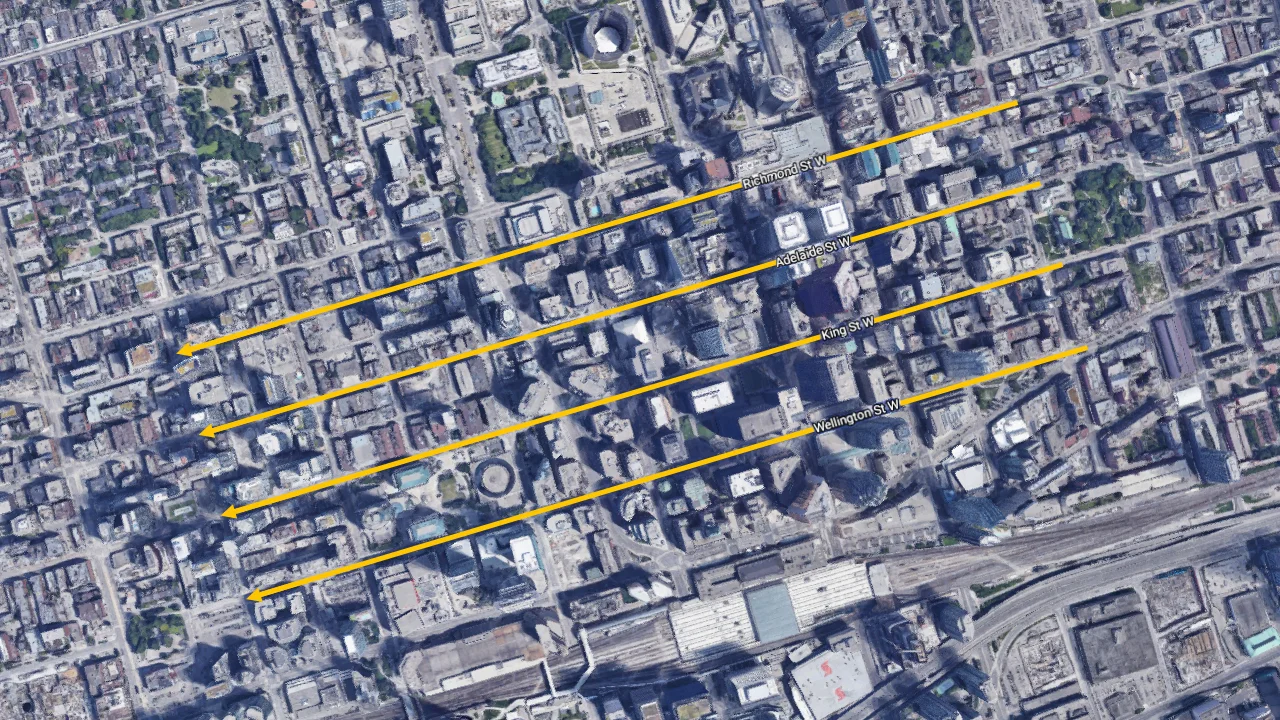
This map shows the best streets for viewing Torontohenge from downtown Toronto. Credits: Google/Scott Sutherland
Each of these roads is straight, with tall buildings lining both sides, and they have a relatively unobstructed view of the western horizon. Any similar street will produce the desired effect, though.
Watch below: The setting Sun shines along downtown Toronto's urban canyons
DON'T MISS: How to safely watch the April 8 total solar eclipse
How does this happen?
Throughout the year, the Sun's position in the sky changes. On the summer solstice, it is highest in our northern sky, and day by day, it tracks lower and lower until we reach the winter solstice. Then, the process reverses, with the Sun's path climbing higher and higher each day until we are again at the summer solstice.
This change in the Sun's angle and its effect on the intensity of the sunlight when it reaches the ground is what produces our four seasons.
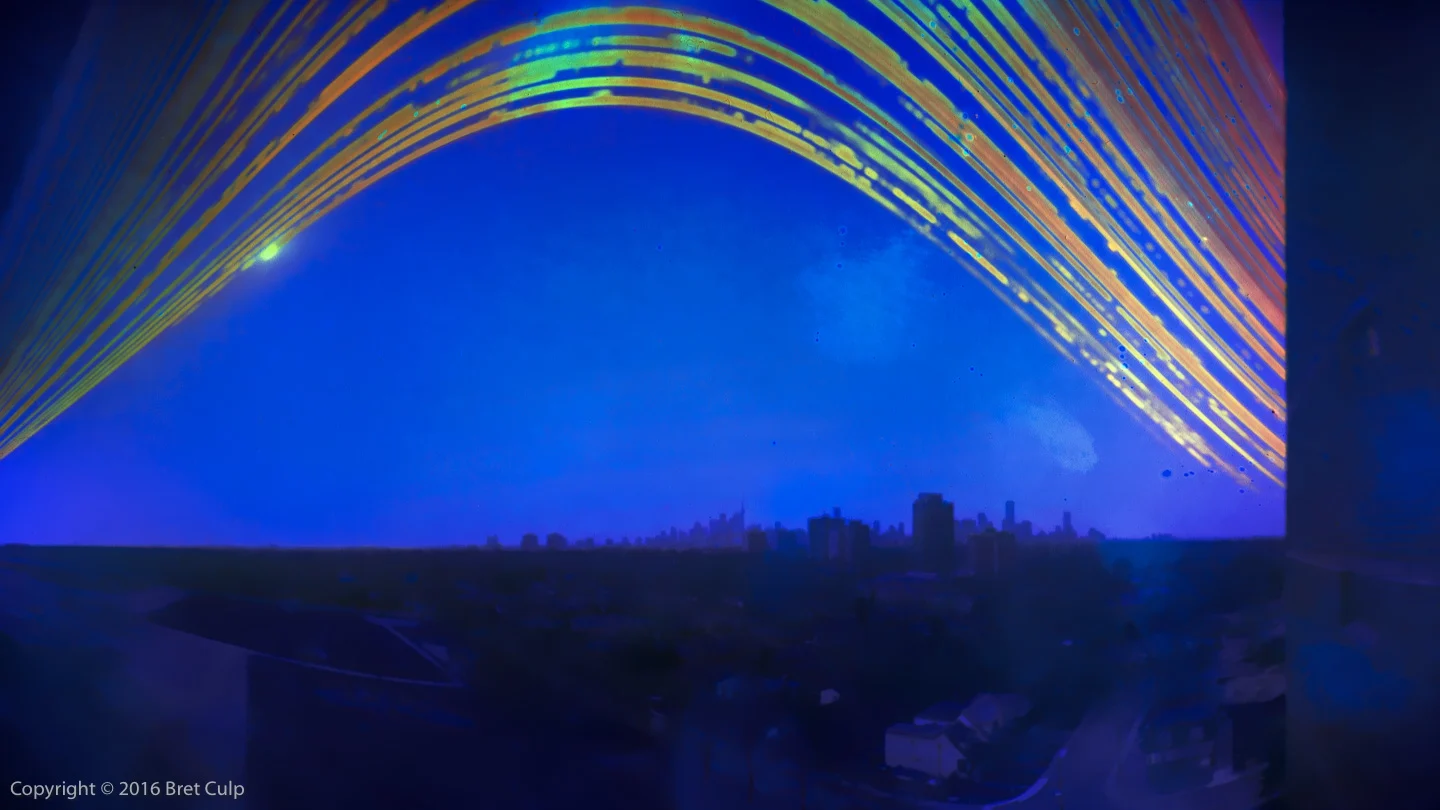
This 'solargraph' image captures the Sun's path across the sky, day after day, between the dates of February 28 and June 20, 2016. Credit: Bret Culp (Used with permission)
So, with each sunrise and sunset we experience, we see the Sun at a different point along the horizon than it was the day before.
When ancient peoples realized this trend, they set up monuments that would line up with the rising and setting Sun on specific days of the year. The most common days to observe this alignment were on the summer and winter solstices. More sophisticated monuments also observed the spring and fall equinoxes.
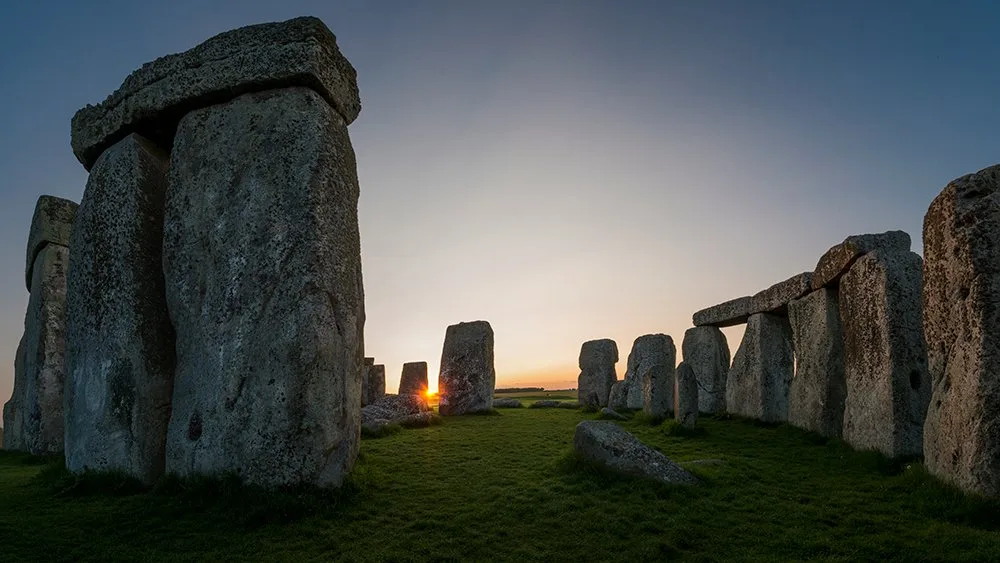
Credit: English Heritage
However, cities such as Toronto and New York weren't built with astronomical alignments in mind. Their orientation was dictated by the local geography, specifically the shape of the Lake Ontario lakeshore and the shape and orientation of the island of Manhattan.
Coincidentally, the Sun does line up with the streets of these cities on specific dates. They just aren't astronomically significant dates. This 'henge' effect of those alignments would also not have been as noticeable to start but became more of a phenomenon as taller and taller buildings began to line those streets.
More than just Toronto
Other locations in Canada experience these 'henges' as well. As long as the community is reasonably grid-like, and there are straight roads lined with buildings — the taller, the better — there's a fair chance it experiences a 'henge' at some time during the year.
For example, although there are fewer tall buildings there, Halifaxhenge happens on the exact dates as Torontohenge.
Montrealhenge occurs at sunset on Summer Solstice and sunrise at Winter Solstice, as the Sun lines up with streets running northwest-southeast, such as Robert Bourassa Boulevard and Peel St.
For Calgaryhenge, the Sun aligns between the buildings on 4th, 5th, or 6th Avenues at sunrise around March 14 and sunset around March 21. It occurs again at sundown on September 21 and sunrise on September 28.
Edmontonhenge is best seen (both sunset and sunrise) right around the March and September equinoxes.
A call for caution!
With the setting sun shining straight down the streets of Toronto, the glare will undoubtedly make the evening commutes more challenging.
For pedestrians and those looking to see and capture Torontohenge, please be cautious and give commuters extra space and consideration. This is especially true when photographing the event, as there may be some temptation to step out into the street for a better angle. Due to the glare from the Sun, you may not be as visible as you think!
And for commuters, whether the Sun is directly in your eyes as you drive west or in your rearview mirror as you go east, extra care is undoubtedly called for right now! Especially when driving downtown, pedestrians may not realize just how much the glare affects you, and there may be Torontohenge enthusiasts trying to get a better look at the phenomenon.
Please watch out for one another so that everyone stays safe!
Share the event!
If you do manage to see this event and capture photos, be sure to upload them to our UGC gallery. That way, we can feature them on our website, and everyone can have a chance to see the stunning sunsets!
(Thumbnail courtesy Sevtibidou/Wikimedia Commons (CC BY-SA 3.0))











